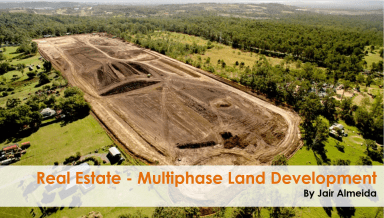
Publication number: ELQ-97379-1
View all versions & Certificate

Real Estate - Multiphase Land Development
The Land Development Model is an Excel-based analysis tool designed to assist in the financial analysis of a land development project.
Further information
Evaluate the financial feasibility of a raw land development project. Analyze the cash flow projections, including construction costs, operating expenses, and revenue from lot sales.
Raw land development projects: The model is specifically designed for analyzing and evaluating the financial feasibility of raw land development projects. It considers the acquisition of land, infrastructure development, lot sales, and associated costs.
Multi-phase projects: The model accommodates multi-phase projects, allowing for the analysis of each phase's financial performance and cash flow projections. It considers the timing of lot sales, expenses, and financing needs for each phase.
The model is specifically designed for raw land development projects, and its assumptions and calculations may not accurately reflect the dynamics of other types of real estate projects, such as vertical construction or redevelopment.













